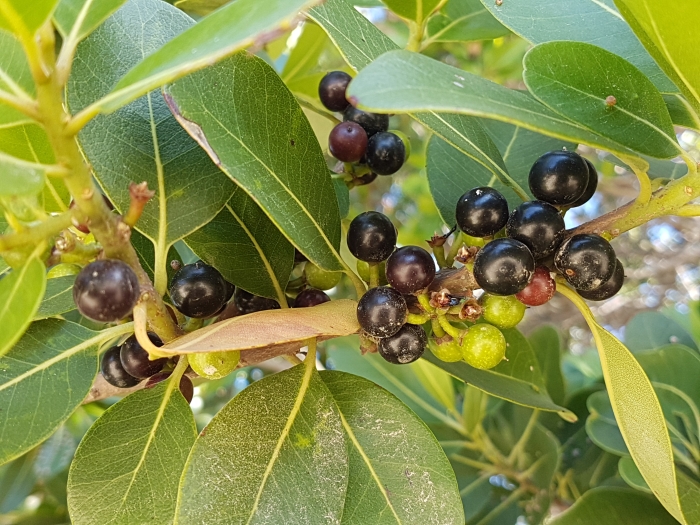White Milkwood
(Sideroxylon inerme)
White Milkwood (Sideroxylon inerme)
/
/

Paul venter
CC BY-SA 4.0
Image By:
Paul venter
Recorded By:
Copyright:
CC BY-SA 4.0
Copyright Notice:
Photo by: Paul venter | License Type: CC BY-SA 4.0 | License URL: https://creativecommons.org/licenses/by-sa/4.0 | Uploader: Paul venter | Publisher: Wikimedia Commons | Title: Sideroxylon_inerme01.jpg | Notes: {{rotate|90}} {{Information |Description=''[[Picea glauca]]'', Fairbanks, Alaska. |Source=[http://www.flickr.com/photos/11360143@N03/2797216879/ Trees] |Date=2008-08-18 04:19 |Author=[http://www.flickr.com/people/11360143@N03 dmcdevit] |Permission= |othe |






















































Estimated Native Range
Summary
Sideroxylon inerme, commonly known as White Milkwood, is an evergreen tree native to coastal forests, dune scrublands, and rocky outcrops in Southern Africa and the Mozambique Channel Islands. It can grow up to 15 meters tall and is characterized by its sturdy, broadleaf evergreen form with dense foliage. White Milkwood produces clusters of small, fragrant, white bisexual flowers that are followed by edible purplish-black berries. The leaves are leathery, spirally arranged, and contain milky latex, which is also present in the berries. Young branches and new leaves have a fine, downy covering of hairs. This species is notable for its hardiness and ability to withstand coastal winds, making it an excellent choice for seaside gardens and landscapes.
White Milkwood is valued for its dense canopy, which provides excellent shade and wind protection. It is often used in urban landscapes, as a shade tree, and for coastal reclamation projects. The tree’s ability to thrive in a variety of soil types, from slow to fast-draining, makes it versatile in cultivation. It prefers full sun but can tolerate light shade. While generally low-maintenance, it is important to note that the milky latex can cause skin irritation in some individuals, and the tree’s dense root system may interfere with nearby structures if not given enough space.CC BY-SA 4.0
White Milkwood is valued for its dense canopy, which provides excellent shade and wind protection. It is often used in urban landscapes, as a shade tree, and for coastal reclamation projects. The tree’s ability to thrive in a variety of soil types, from slow to fast-draining, makes it versatile in cultivation. It prefers full sun but can tolerate light shade. While generally low-maintenance, it is important to note that the milky latex can cause skin irritation in some individuals, and the tree’s dense root system may interfere with nearby structures if not given enough space.CC BY-SA 4.0
Plant Description
- Plant Type: Tree
- Height: 25-40 feet
- Width: 25-40 feet
- Growth Rate: Moderate
- Flower Color: White
- Flowering Season: Summer, Fall
- Leaf Retention: Evergreen
Growth Requirements
- Sun: Full Sun
- Water: Medium
- Drainage: Slow, Medium, Fast
Common Uses
Bee Garden, Bird Garden, Butterfly Garden, Fragrant, Low Maintenance
Natural Habitat
Native to coastal forests, dune scrublands, and rocky outcrops in Southern Africa and the Mozambique Channel Islands
Other Names
Common Names:
Scientific Names: , Sideroxylon inerme, Calvaria inermis,
GBIF Accepted Name: Sideroxylon inerme L.